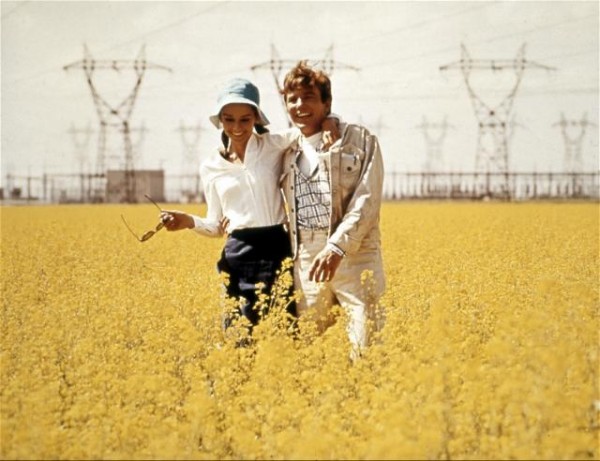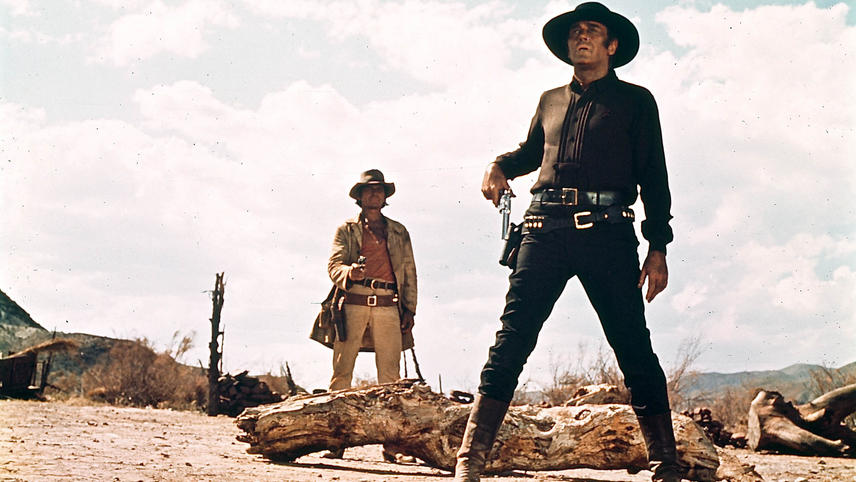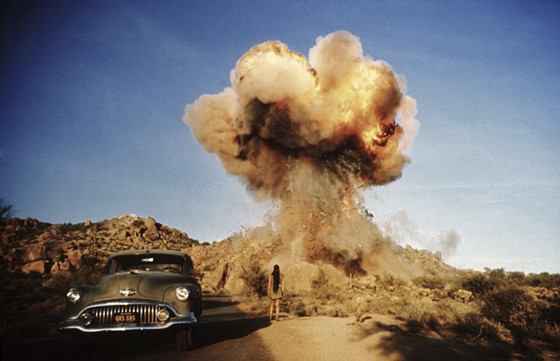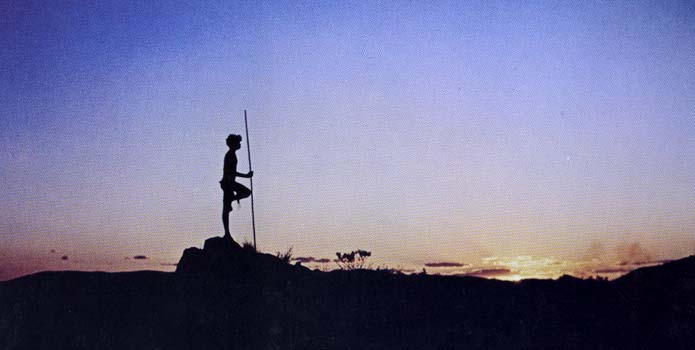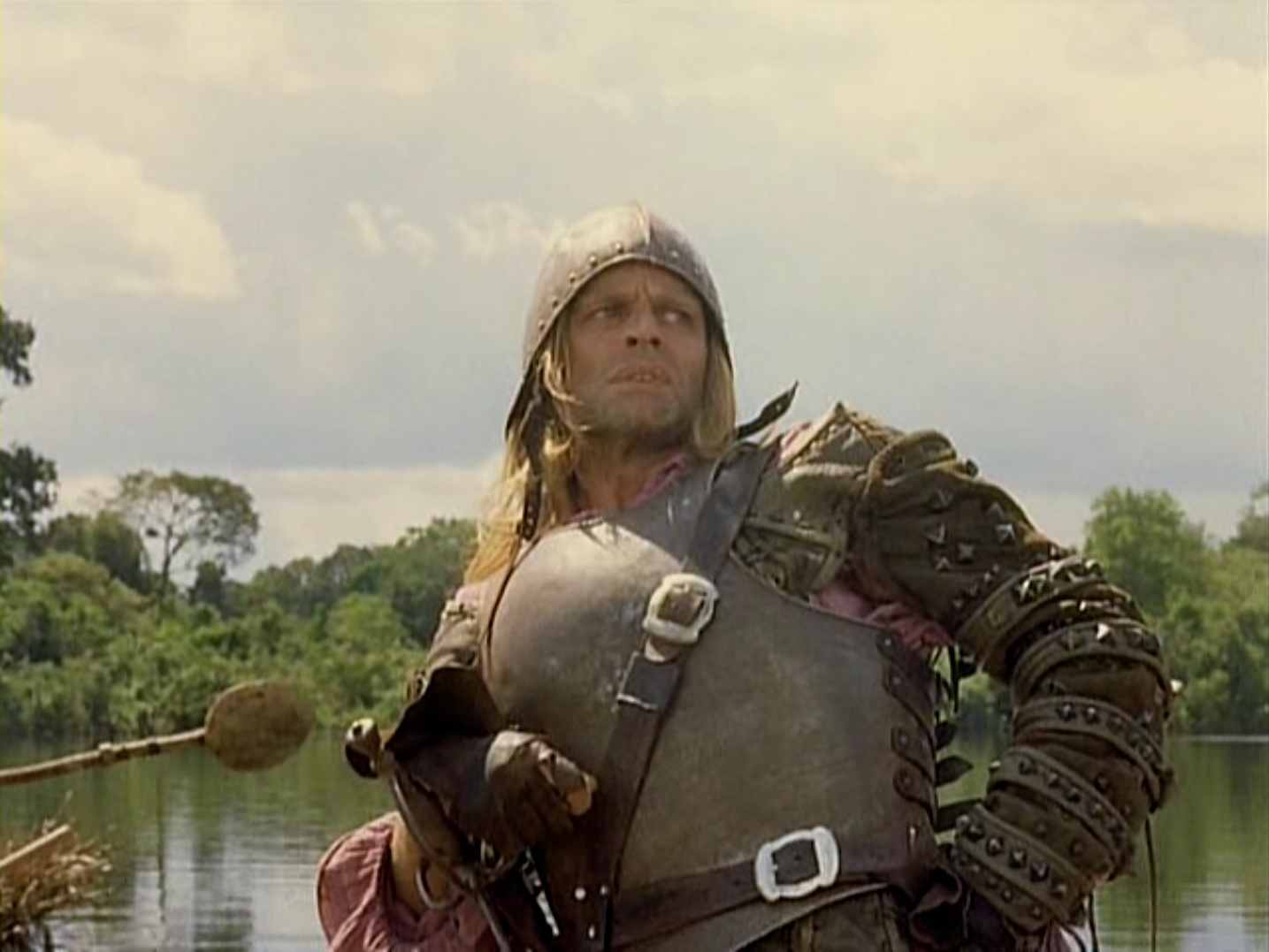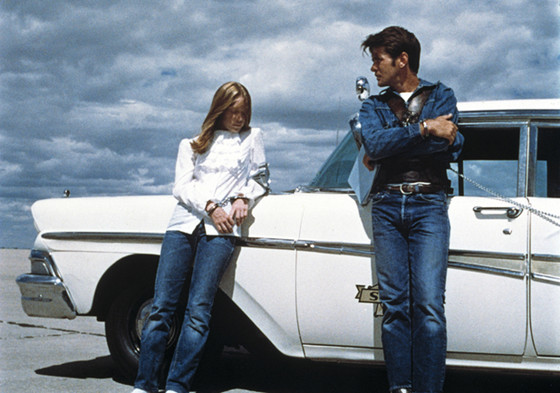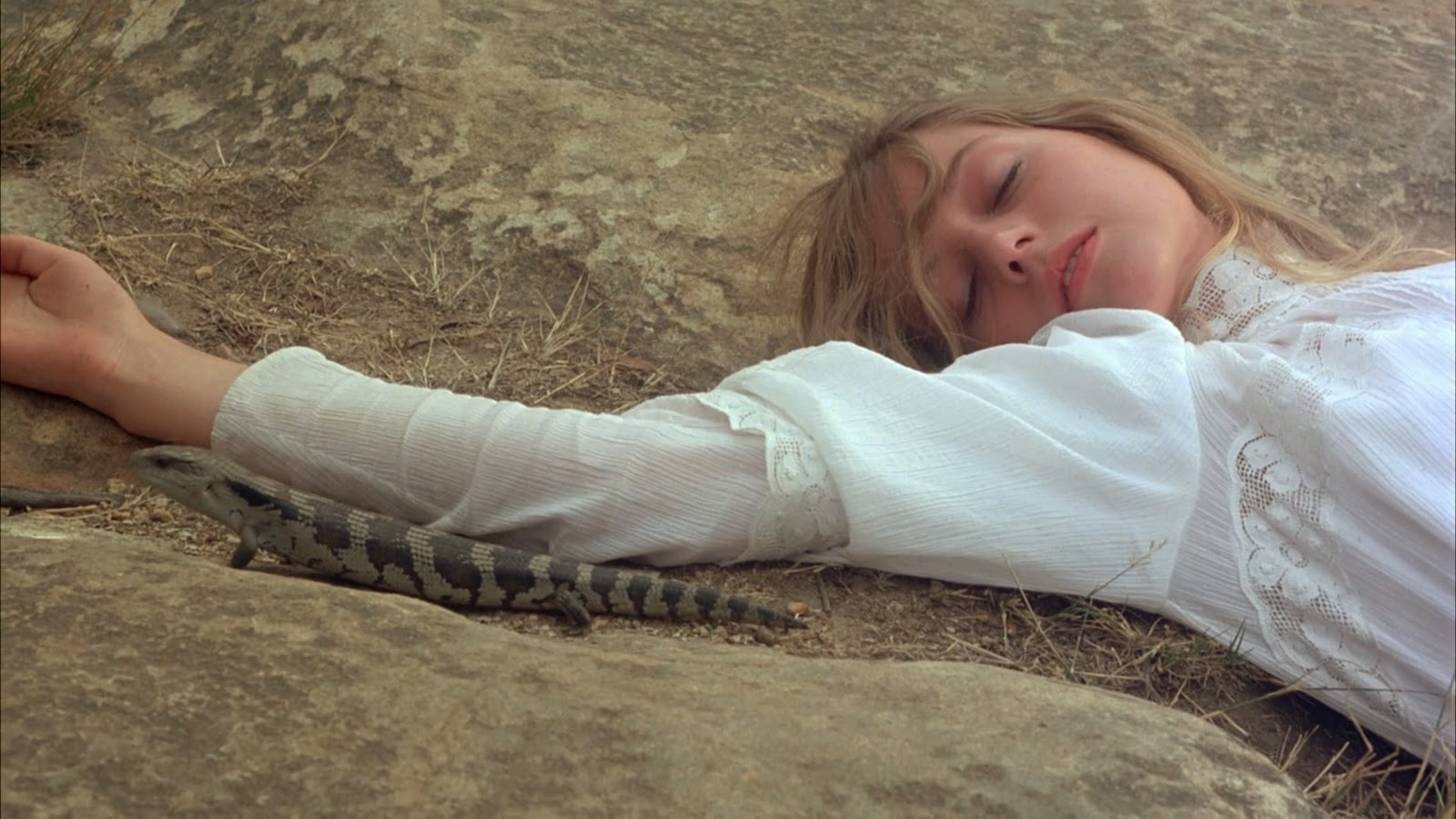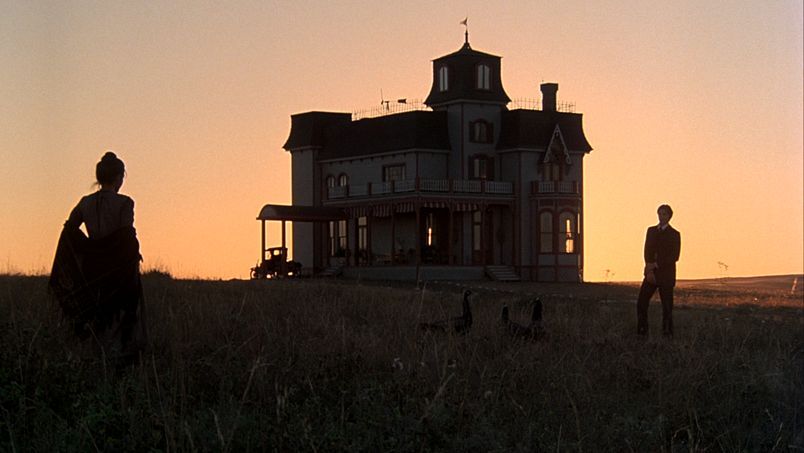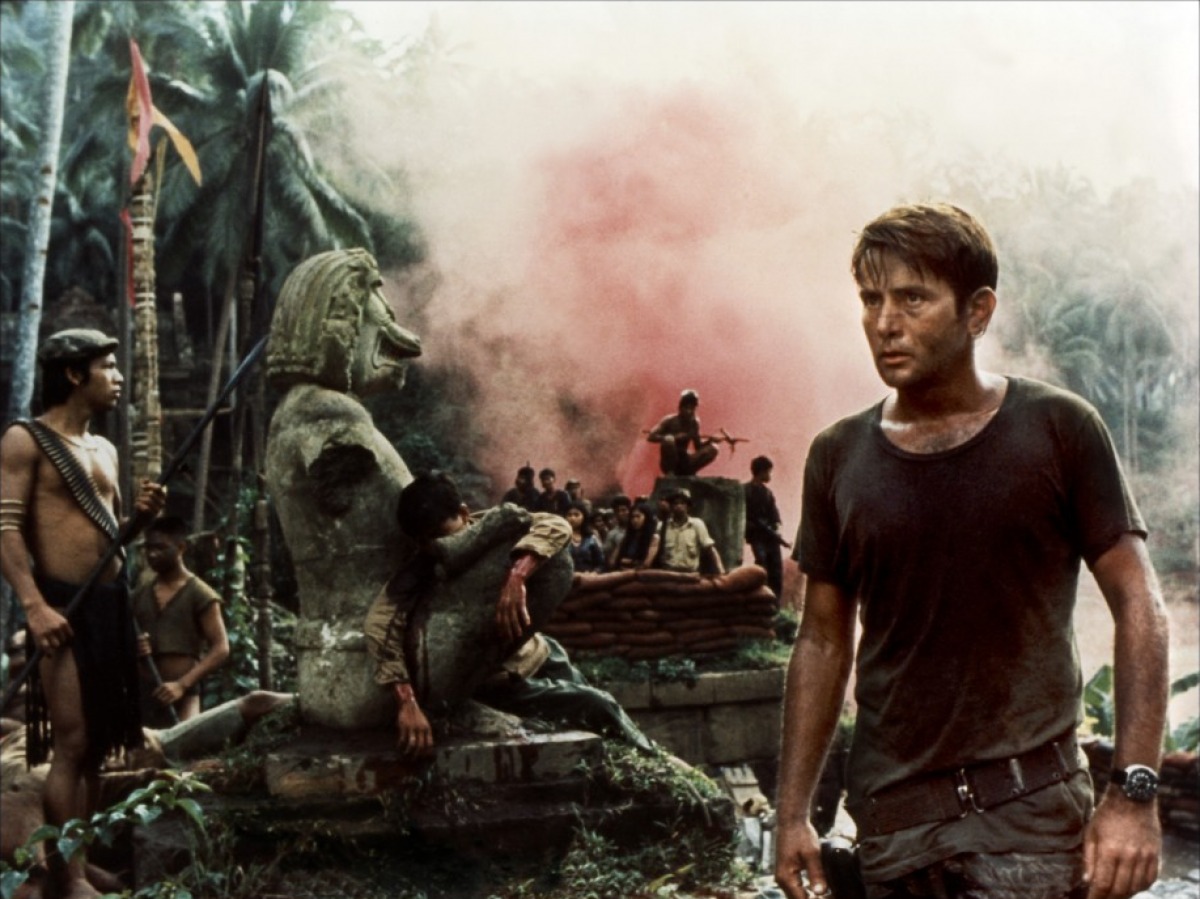9. Two for the Road (1967, Stanley Donen)
In this thematic, non-linear story of the up and down relationship of a couple, Mark (Albert Finney) and Joanna (Audrey Hepburn), the landscape of Southern France acts as a trigger in the telling of their past and present together.
The playful and sometimes emotionally volatile pair meet and travel together along the same stretch of road while on holiday. Over a period of a few years we see their interactions and relationship change as they revisit the same towns, beaches, and country along the South of France.
Stanley Donen’s somewhat experimental storytelling puts the landscape at the forefront as the couple’s timeline is strung together through the locations. Their passionate relationship grows and transforms with the constant backdrop of France to act as a stabilizing element to their sometimes unstable marriage.
10. Once Upon a Time in the West (1968, Sergio Leone)
Sergio Leone’s western epic explores the barren landscape of the old west as a blank canvas for construction, transportation, and settlers. Part action film, part revenge tale, part brooding drama, Once Upon a Time in the West stylishly portrays a multifaceted story with a strong ensemble of characters.
A beautiful young woman and previous prostitute, Jill McBain (Claudia Cardinale), arrives to the fictional western town of Flagstone to find her newly married husband and his children massacred. Her husband, it turns out, bought acres of desolate land he named “Sweetwater” with the plan of creating a railroad station. She is the sole hier.
A battle ensues for ownership of the land on the part of McBain’s killer, a strong willed gun-slinger, Frank (Henry Fonda), hired by crippled railroad tycoon, Morton (Gabriele Ferzetti). A mysterious, harmonica-playing stranger (Charles Bronson) and outlaw Cheyenne (Jason Robards) helps Mrs. McBain in the fight for her land.
From the start of the film, the land is vast, dusty and dry, with minimal civilization. Upon Mrs. McBain’s arrival, a carriage driver laughs at the name her husband chose for their land: “Sweetwater,” since it’s a seemingly fruitless area.
Other characters are cognizant of the bleak landscape, such as the railroad industrialist Morton, who dreams of some day reaching a body of water through his existing railway line. Leone’s landscape frames the characters within their struggles as well as plays a large part of the plot.
11. Zabriskie Point (1970, Michelangelo Antonioni)
Antonioni’s cult classic explores the desert landscape of Death Valley as two young lovers wander the spacious earth. The director makes contrasts between the chaotic, police state of the city and the liberating, expansive desert.
Two young adults, Mark (Mark Frechette) and Daria (Daria Halprin), both somewhat involved or interested in the counterculture movement, meet in the empty desert of California’s Death Valley. From the start of the film, we follow the two of them on their separate journeys which collide in Zabriskie Point.
Mark is a semi-revolutionary, on the run from the police after a protest he witnesses turns violent and he is the suspect of a police murder. Daria, a casual hippie, works for real estate executive Lee Allen (Rod Taylor). On her way to meet him in Phoenix, she stops in the California desert to find a meditation center a friend recommended. Mark and Daria connect in the peaceful Zabriskie Point, where they can escape from the rigid, noisy, and in Mark’s case, dangerous atmosphere of the city.
Antonioni injects psychedelic elements into his trademark realism, making the desert come to life. The landscape of the desert acts as a catalyst for the two city-dwellers, bringing them together against the mainstream zeitgeist.
12. Walkabout (1971, Nicolas Roeg)
Nicolas Roeg’s film uses the vast Austrialian Outback as an obstacle that his two young, city-dwelling characters must overcome in order to survive after their father commits suicide.
The film opens with images of crowded urban streets in a metropolitan Australian city set to the bellowing, hypnotic sound of a didgeridoo. Two siblings, a teenage girl (Jenny Agutter) and her younger brother (Luc Roeg) go on a picnic with their father in the wide open Australian Outback.
Inexplicably, their father (perhaps affected somehow by their crowded urban lifestyle) starts shooting at them. They run and hide while he lights his car on fire and shoots himself. The siblings, led by the girl, wander the desert, in search of a way back to civilization. They meet an young aboriginal man who helps them find water, hunt for food, and guides them through the beautiful desert.
Roeg’s landscape of the desert is free and boundless, in contrast to the congested urban cityscape. The two citydwelling youngsters get in touch with the natural lifestyle of the land, with the help of the indigenous Australian youth.
13. Aguirre, The Wrath of God (1972, Werner Herzog)
One of Werner Herzog’s forays into the jungles of Peru and the Amazon river, this film tells the story of a group of Spanish conquistadors traveling through the Peruvian jungle on a search for the legendary kingdom of El Dorado.
In the mid-16th century, after the conquest of the Incan Empire, a large group of Spanish conquistadors, with two Spanish women and indigenous slaves in tow, are on a mission to find the “city of gold.” The mission, led by Gonzalo Pizarro (Alejandro Repullés), starts to ebb, with his men dying at the hands of the treacherous river.
Don Lope de Aguirre (Klaus Kinski) takes control of the group and becomes a merciless leader. He forces the men farther down the river- not willing to give up the mission, despite its futility.
The relentless and ominous landscape of the jungle drives Aguirre, already somewhat delusional, to insanity. His unyielding drive to find El Dorado, leads him and the men far into the chaos of the jungle. Photographed beautifully by Thomas Mauch, the landscape is an imposing foe, captured as a dangerous and looming presence.
14. Badlands (1973, Terrence Malick)
In Terrence Malick’s debut film, the landscape is a rustic freedom for the film’s two young, impulsive lovers. In comparison to their ordinary, rather boring country life in South Dakota, the land offers the youngsters a chance to live life by their own rules.
Twenty-five year old Kit (Martin Sheen), garbageman and hoodlum, meets fifteen year old Holly (Sissy Spacek) and the two fall in love, to the disapproving eyes of Holly’s father (Warren Oates). After impulsively killing Holly’s father, Kit convinces Holly to run away with him. On the run from the law, the two set up home in a tree house they build for themselves in the wilderness.
With Malick’s visually gorgeous touch, the film captures the romanticism and psychopathy of the couple with the landscape as their liberating force. Living outside of society, the two live freely, however violent that may lead.
15. Picnic at Hanging Rock (1975, Peter Wier)
Peter Weir’s classic uses the mountainous landscape of Hanging Rock as an enigmatic force that seems to exert a power over the people who explore it. The music and cinematography give the mountain an exotic, somehow psychic nature.
In Australia, three Victorian schoolgirls go missing during a Valentine’s Day field trip to Hanging Rock, a large mountain nearby. The school faculty as well as the townspeople go on a search for the girls, whose disappearance seems more mysterious than accidental.
Contrasted with the prim and proper values the girls learn in school, the mountain releases a certain sensuality in the pubescent girls. Weir’s captivating film makes use of the mountain as a maze-like force of nature that seems to cast a spell on the girls.
16. Days of Heaven (1978, Terrence Malick)
Another Terrance Malick masterpiece, the land in Days of Heaven is depicted both as a vibrant, life-giving force of nature, as well as tumultuous and destructive.
The time is 1916, and laborer Bill (Richard Gere), his lover Abby (Brooke Adams), and his younger sister Linda (Linda Manz) travel across the country to work on a wheat farm. The rich, yet sickly owner of the farm (Sam Shepard) falls in love with Abby, and Bill concocts a plan for her to marry him and inherit his fortune. Bill poses as her brother, but his jealousy gets the most of him.
The landscape, beautiful as it is, is a reflection of the actions in the film. At one point near the climax of the film, a decent of locusts on the farm seems to erupt from the tensions between the two men. With dazzling cinematography by Néstor Almendros and Haskell Wexler, most of the scenes were shot with natural lighting or during “golden hour” (the time during sunset), and as a result the landscape has a breathtaking aura surrounding it.
17. Apocalypse Now (1979, Francis Ford Coppola)
Loosely based on Joseph Conrad’s Heart of Darkness, Francis Ford Coppola’s masterpiece engulfs the viewer in the war-torn countryside of Vietnam. Through the fantastic sound design that pans from speaker to speaker and gorgeous cinematography by the reknowned Vittorio Storaro, Coppola recreates the war for his viewer, illustrating how the tense atmosphere implements the characters’ descent into insanity.
Stationed in Saigon, the already unsettled Captain Willard (Martin Sheen) is summoned to complete a special operation mission: to travel up-river to Cambodia with a Navy patrol boat and find the missing Colonel Kurtz (Marlon Brando).
After some preliminary information from his commanding officers, Willard sets off on his mission with a group of young draftees. As he reads through Kurtz’s files, Willard comes to realize the kind of beast he has been sent to terminate: a very skillful, powerful man who, trained by the Special Forces, has taken the war on Vietnam into his own hands.
The wilderness of the jungle, combined with the horrors of war, cause the men to unravel. In the case of Kurtz -and perhaps also Willard- the army training and battlefield experience displace them from their roles in American society so that the world of killing becomes their only identity. Coppola uses the landscape of Vietnam, as seen from the bomb-dropping helicopters and gun-toting river boats, to build a reality that weighs on its occupants and causes them to dissociate from their previous selves.
